Rod of Asclepius | Mythical Staff

The staff of Asclepius is an ancient symbol, related to astrology and to healing the sick through medicine. It consists of a staff wrapped around a serpent. It is sometimes confused with the caduceus of Hermes (Mercury), which consists of a staff with two coiled serpents and wings on top.
Asclepius (Latin: Aesculapius) was the Roman god of medicine and healing. He was directly inherited from Greek mythology, in which he had the same properties but a subtly different name: Asclepius (Greek: Ἀσκληπιός, transl. Asklēpiós).
According to Greek Mythology, Asclepius is said to have learned the art of healing from Chiron. He is customarily depicted as a surgeon on the ship Argo, built with the help of the goddess Athena.
Aesculapius was so skilled in the medical arts that he gained a reputation for bringing patients back from the dead. Because of this, he was punished and placed in the heavens as the constellation Ophiuchus (meaning: "the bearer of the serpent", or "The Serpent"). Such a constellation lies between Sagittarius and Scorpio.
In several sculptures proceeding from Greco-Roman temples of Asclepius, the god of medicine is always represented holding a staff with a serpent around it, which became the symbol of medicine.
Use as an official emblem
The World Health Organization (WHO), founded in 1948, adopted the symbol of Asclepius as part of its flag. The World Medical Association, meeting in Havana in 1956, also adopted a standardized model of the symbol of Asclepius for use by civilian physicians.
The professional and nationwide medical organizations of various countries, which have an emblem with serpent of Asclepius, are those of Brazil, Canada, Costa Rica, England, France, Germany, Sweden, Denmark, Italy, Portugal, South Africa, Australia, New Zealand, Southeast Asian countries, China, and Taiwan.
Caduceus of Hermes and Asclepius
The staff of Asclepius (the one idealized as the symbol of medicine) is a serpent taking two and a half turns around the wooden staff. However, the United States Navy mistakenly adopts the symbol of Hermes for its medical staff, and there is some lay disagreement about the use of the caduceus - or staffs.
The caduceus of Hermes, which actually has a representation of Accounting, is described as an iron staff, with two serpents and at the end attached a pair of wings. The medical symbol should not be represented with wings.
Derivations
Every symbol can be stylized, but it cannot be replaced by another. As original stylizations of the symbol of Asclepius, we can cite the following symbols and the alterations used in Brazil.
The Associação Paulista de Medicina and the Academia Brasileira de Medicina Militar, in which the staff takes the form of a sword;
Escola Paulista de Medicina, in which the staff is the trunk of a tree;
Brazilian Association of Medical Education, where the staff is a torch, symbolizing the light of knowledge;
Faculdade de Medicina de Ribeirão Preto, where the snake takes the shape of a surgical knot;
Federal Council of Veterinary Medicine, where next to the staff and the serpent is inserted the letter V, both having an irregular hexagon as a frame.
Origins
There are several origins to the development of the symbolism related to the Asclepius' staff, all of which certainly contributed to the composition of its meaning. The symbol is named after an ancient Greek legend, however, the symbol predates the legend.
Biblical origin
There are biblical references to the staff of Asclepius. "And the Lord said unto Moses, Make thee a fiery serpent, and set it upon a rod; and whosoever, having been bitten, looketh thereon shall live."
The passage is an unincorporated reference dated historically, (despite archaeological investigations seeking to date the Bible and the events described therein) but it references the medical use of the serpent symbolism.
The dating is from the Old Testament, which suggests the possibility that the caduceus was a medical symbol prior to Christ.
Egyptian origin
In the interchange of Greek and Egyptian civilization, the god Thoth of Egyptian mythology was assimilated to Hermes, and from this syncretism resulted the name Egyptian Hermes or Hermes Trismegistos (three times great), given to the god Thoth, considered the god of knowledge, speech, and magic. In the Egyptian pantheon, the god of medicine corresponding to Asclepius is Imhotep, not Thot.
Syncretic origin
Between the 3rd century B.C. and the 3rd century A.D., an esoteric literature called Hermetic developed, in allusion to Hermes Trismegistos. This literature deals with occult sciences, astrology and alchemy, and has no relation to the traditional Hermes of Greek mythology.
The syncretism between Hermes of Greek mythology and Hermes Trismegistus resulted in the use of the caduceus as a symbol of the latter, and was adopted as a symbol of alchemy. According to Schouten, from alchemy the caduceus would have passed to pharmacy and from this to medicine.
